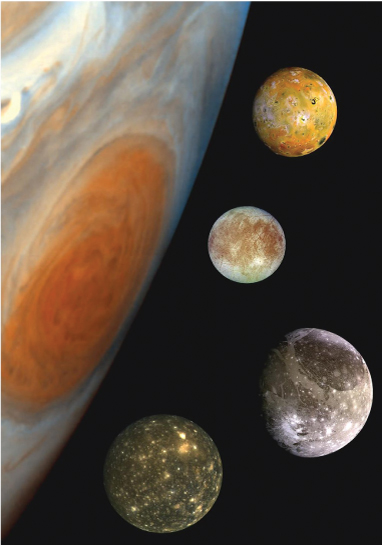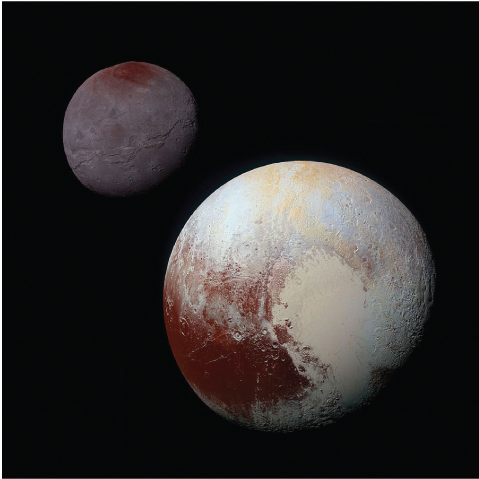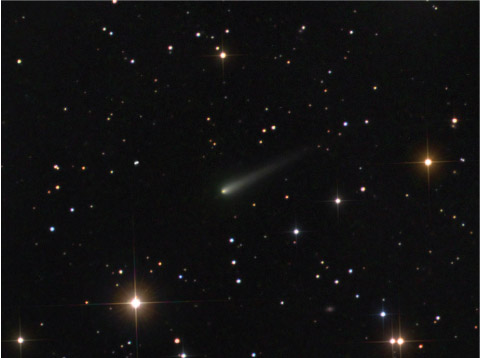1.5 Other objects in the Solar System
There are plenty of objects in the Solar System that are neither planets nor dwarf planets. Objects that orbit a planet rather than the Sun are called moons, or satellites. Mercury and Venus are the only planets in our Solar System that don’t have satellites, while the giant planets – Jupiter, Saturn, Uranus and Neptune – have over 150 between them.
The montage in Figure 11 shows Jupiter’s Great Red Spot and its four largest moons, the Galilean moons. From top to bottom, these are Io, Europa, Ganymede and Callisto. Their relative sizes and the size of the Great Red Spot are accurate.
Dwarf planet Pluto has five moons, of which the largest, Charon, is almost as large as Pluto itself (Figure 12).
The rest of the Solar System is far from empty. Apart from the planets and moons, the Solar System contains asteroids (smaller, irregular lumps of rock) and comets (irregular lumps of ice and dust). Asteroids mostly congregate in the region between Mars and Jupiter known as the ‘asteroid belt’. Comets tend to have very stretched, or elliptical, orbits around the Sun, often coming from regions beyond Pluto to pass close to the Sun. The most famous of these, Halley’s comet, returns to the inner Solar System about once every 75 years – it will visit us again in 2061.
When a comet approaches the Sun, the heat and radiation destroys some of the ice, creating a huge cloud of gas and dust, called a ‘coma’, which surrounds the comet. Some of the material streams out in a long tail behind the comet, giving the comet its distinctive appearance. Some comets return after hundreds of years, but some never come back at all. The unlucky ones, such as comet ISON in 2013, fail to survive their encounter with the Sun (Figure 13).
Activity 3 Planet, dwarf planet, moon, or something else?
Using the internet to help where necessary, identify each of the following objects as either a planet, dwarf planet, moon or something else.
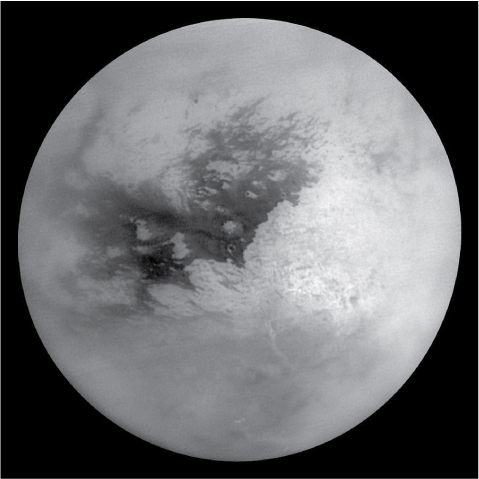
1. Vital statistics: approximately half the size of Earth, rocky, round, orbits Saturn.
Answer
Titan, Saturn’s largest moon.
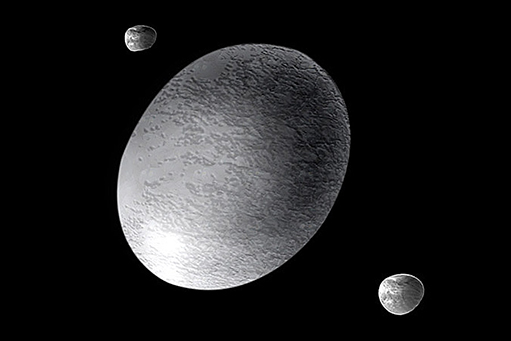
2. Vital statistics: approximately one-tenth the size of Earth, rocky, orbits the Sun, found in the distant region of the Solar System called the Kuiper Belt (like Eris).
Answer
Haumea, a dwarf planet. Although Haumea is rounded it is less spherical than other dwarf planets because it is rapidly spinning.
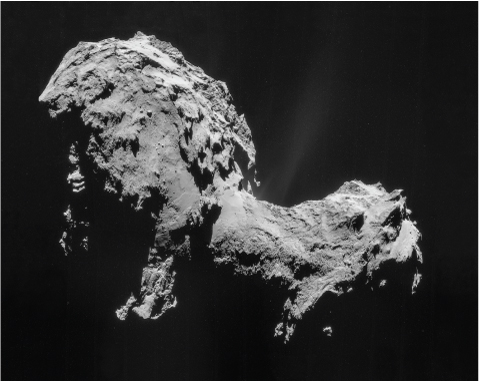
3. Vital statistics: a few kilometres across, icy, orbits the Sun.
Answer
Comet 67P, on which the Philae spacecraft landed in 2014.
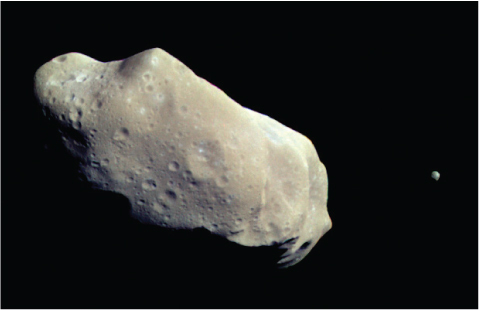
4. Vital statistics: a few tens of kilometres across, rocky, orbits the Sun.
Answer
Ida, an asteroid (larger body) and Dactyl, a baby asteroid that orbits the larger body like a mini-moon (smaller body).
The planets in our Solar System vary greatly in size, although they are generally much smaller and fainter than stars, as Video 2 shows.

